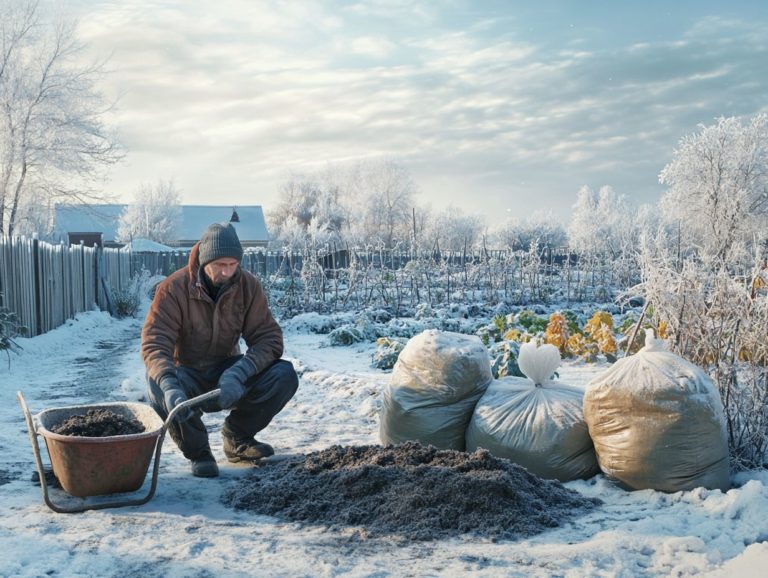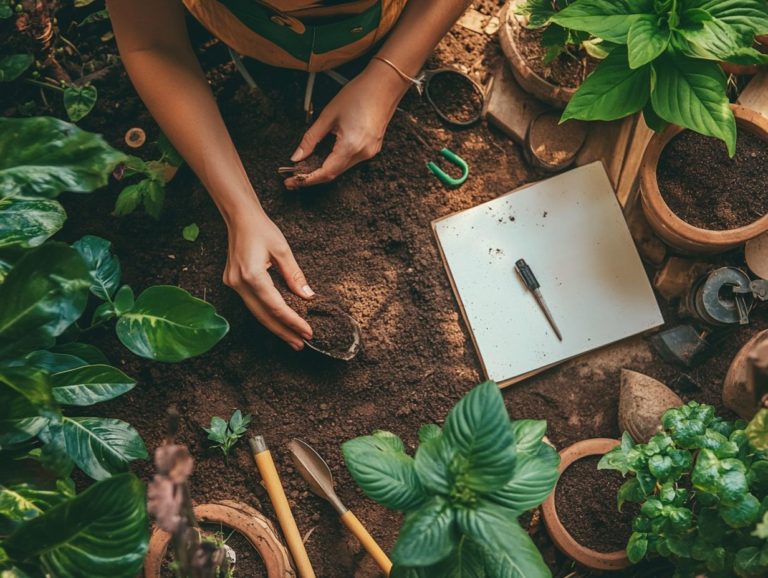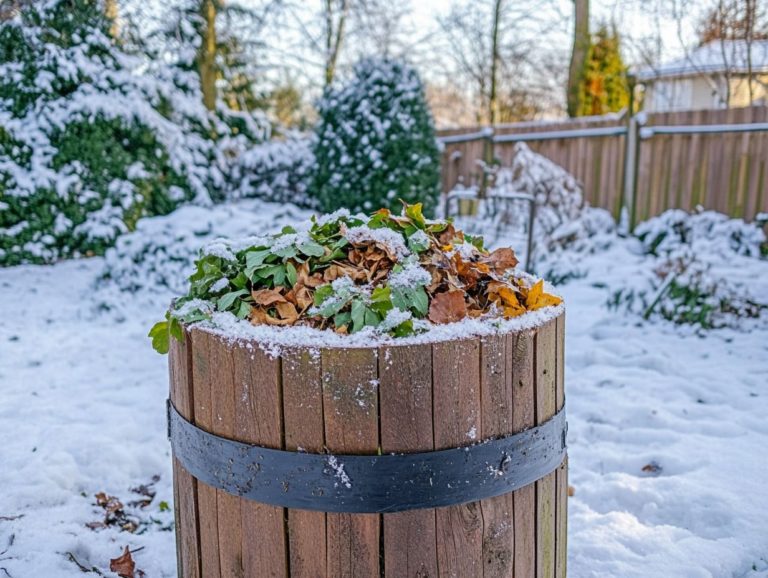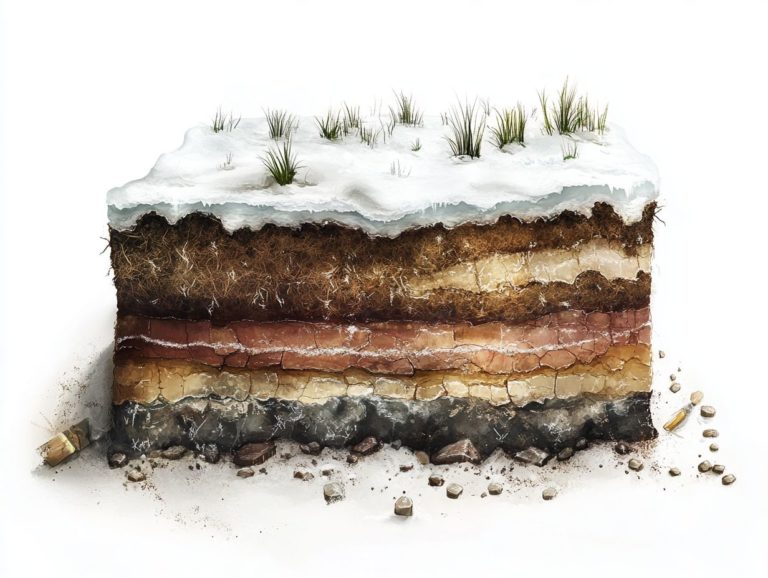Understanding Soil Texture and Its Importance
Soil, the foundation of agriculture, might sound like a technical term, but it s actually a key player in gardening, farming, and environmental health.
This article delves into soil texture. It is a critical aspect of soil science that provides insights into effective agricultural practices. You’ll learn how soil texture is measured and why it’s essential for supporting healthy plant growth and nutrient availability.
By the end, you’ll see the soil beneath your feet in a whole new light!
Contents
Key Takeaways:
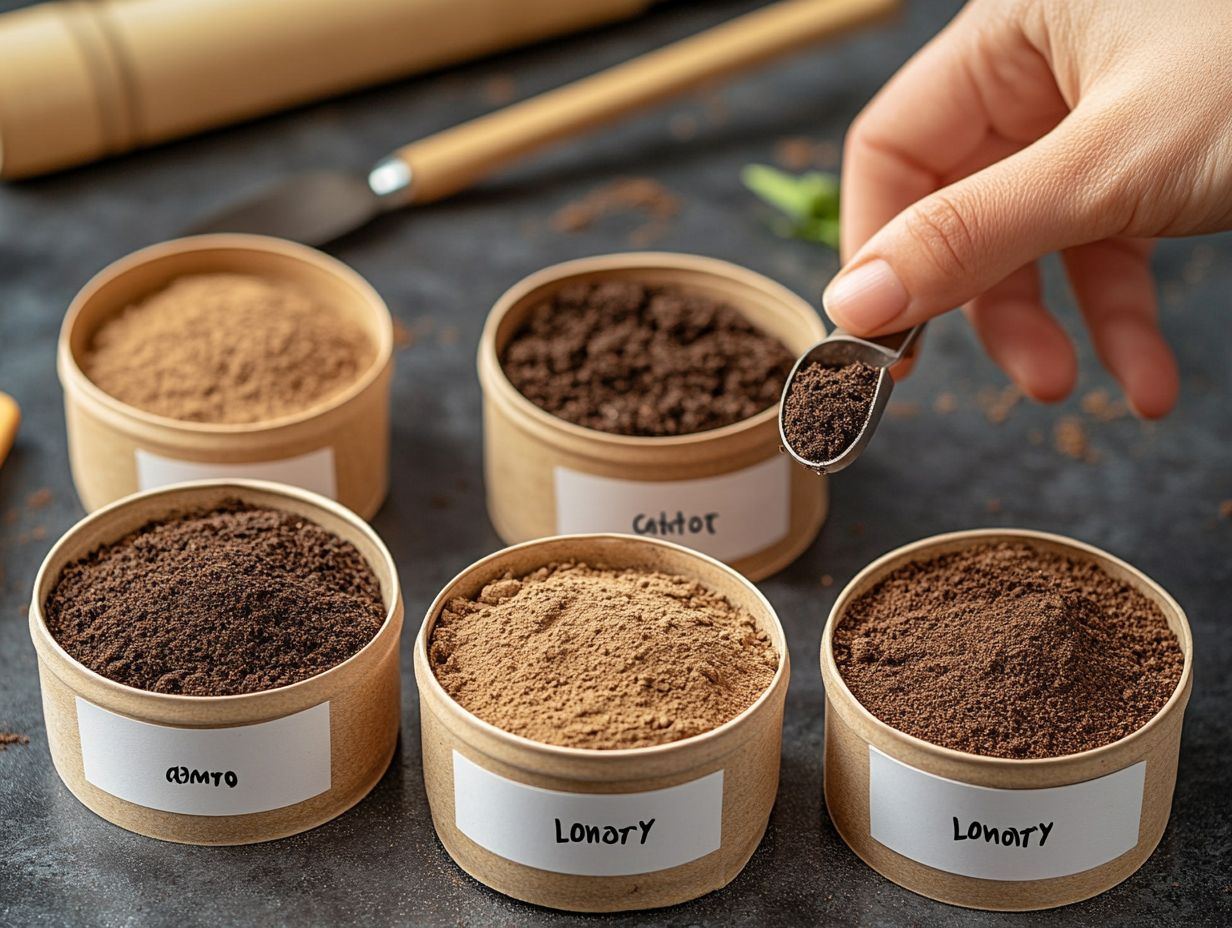
- Understanding soil texture is essential for successful plant growth. Soil health is crucial for sustainable agriculture, as it affects nutrients and water retention.
- Climate, parent material, and biological activity shape soil texture. Understanding these factors helps in adopting effective farming practices.
- You can improve soil texture by adding organic matter and using proper tillage methods. This leads to healthier, more productive soils.
What is Soil Texture?
Soil texture refers to the different sizes of soil particles sand, silt, and clay. This mixture affects how well the soil drains and holds nutrients, which is crucial for healthy plant growth.
For instance, a coarse sandy soil behaves quite differently than a fine-textured clay soil. This directly impacts plant growth and maximizing crop yields, which is a goal for every farmer. The balance between these components determines soil fertility and its capacity to nurture robust plants.
Defining and Measuring Soil Texture
Defining and measuring soil texture means diving into the composition and relative proportions of soil particles specifically, sand, silt, and clay. This understanding is pivotal for various agricultural and environmental applications.
It guides your decisions on crop selection, irrigation methods, and soil management. These practices directly influence crop production. There are several approaches to determine soil texture, from simple field tests to more intricate laboratory analyses.
For instance, you might use a straightforward feel test: moisten the soil, work it into a ball, and assess its texture just by touch. Alternatively, laboratory methods like sedimentation a technique where soil is placed in water to observe how different particles settle or hydrometer tests can give precise measurements of particle sizes.
Taking soil samples is important for conducting accurate tests. This reveals the nutrient composition and allows for insightful analysis. The textural triangle is a valuable tool in soil classification, assisting in understanding soil characteristics and helping you choose the right plants.
Understanding soil properties and behaviors is critical for effective land use.
Importance of Soil Texture
Soil texture is crucial for every gardener and farmer! It fundamentally influences plant growth, nutrient availability, and the overall health of the soil, which in turn has a profound effect on agricultural practices and crop yields.
By grasping the nuances of soil texture, you empower yourself to make informed decisions about soil management techniques and amendments. These can enhance fertility, optimize water retention, and refine drainage characteristics.
Understanding different soil types is essential, as each requires distinct management techniques. For example, sandy loam is a popular choice for gardening, while dense clay affects water movement. Analyzing the soil profile yields insights into soil health, ultimately impacting moisture retention and the efficacy of organic amendments that can significantly improve soil structure.
Impact on Plant Growth and Nutrient Availability
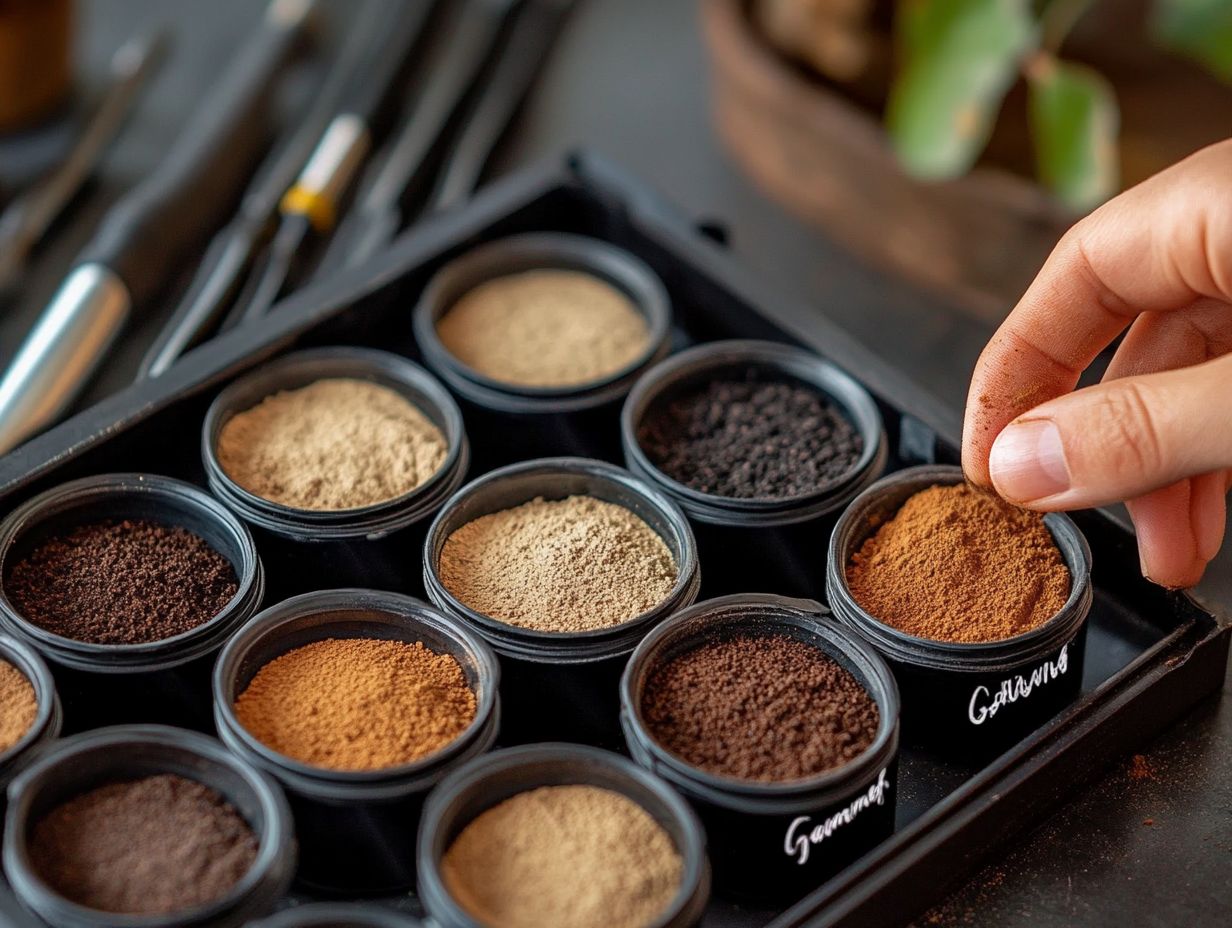
Soil texture profoundly influences plant growth and nutrient availability. It directly affects the soil’s ability to retain moisture and essential nutrients both critical for robust plant development.
Different soil textures, such as sandy, loamy, and clay, each have unique moisture retention capabilities. For example, sandy soils are excellent for drainage but often struggle to retain vital moisture, making it challenging for plants to access water during dry spells.
On the flip side, clay soils excel at holding moisture, yet they can become compacted, which hampers aeration and drainage, potentially suffocating the roots.
Loamy soils are often considered the gold standard a balanced blend of sand, silt, and clay that promotes optimal growth. They maintain just the right balance of moisture and nutrients, creating an ideal environment for your plants to thrive.
Relationship to Soil Health
The relationship between soil texture and soil health is intricate. Texture influences not only the ability to hold nutrients but also its organic matter content, both essential for maintaining soil fertility.
Soil texture refers to the size and distribution of soil particles, ranging from sandy to clayey compositions. A well-balanced texture, typically in the form of loam, enhances the soil’s ability to retain essential nutrients and moisture, creating a welcoming environment for organic matter.
This organic matter, primarily composed of decomposed plant and animal materials, is crucial for improving soil structure and sustaining diverse microbial life.
When you prioritize soil health, you directly influence crop production, leading to higher yields and promoting agricultural sustainability. Responsible land management practices reduce erosion and enhance biodiversity.
Factors Affecting Soil Texture
Several factors influence soil texture, including climate, parent material, and biological activity. Each plays a crucial role in shaping the composition and characteristics of the soil you encounter.
Varying climate conditions affect the weathering processes of parent materials, resulting in the development of diverse soil types, each with its unique texture. Furthermore, biological activity like the decomposition of organic matter directly impacts soil structure and composition.
This, in turn, influences your soil management practices and the overall health of the farming environment around you.
Climate, Parent Material, and Biological Activity
Climate, parent material, and biological activity shape soil texture. Each factor contributes uniquely to the soil’s overall characteristics.
Variations in climate lead to distinct weathering processes that break down rocks and minerals, gradually influencing soil texture. For example, in arid regions, limited rainfall restricts chemical weathering, causing coarser soils. In contrast, a humid climate accelerates decomposition, yielding finer textures rich in organic matter.
The type of parent material whether sediment, granite, or volcanic ash determines the soil’s mineral composition, directly affecting its fertility. Biological activity, which includes interactions among microorganisms, earthworms, and plant roots, is crucial in nutrient cycling, enhancing soil health and supporting diverse ecosystems.
These elements create a dynamic environment capable of nurturing life in all its forms.
Improving Soil Texture
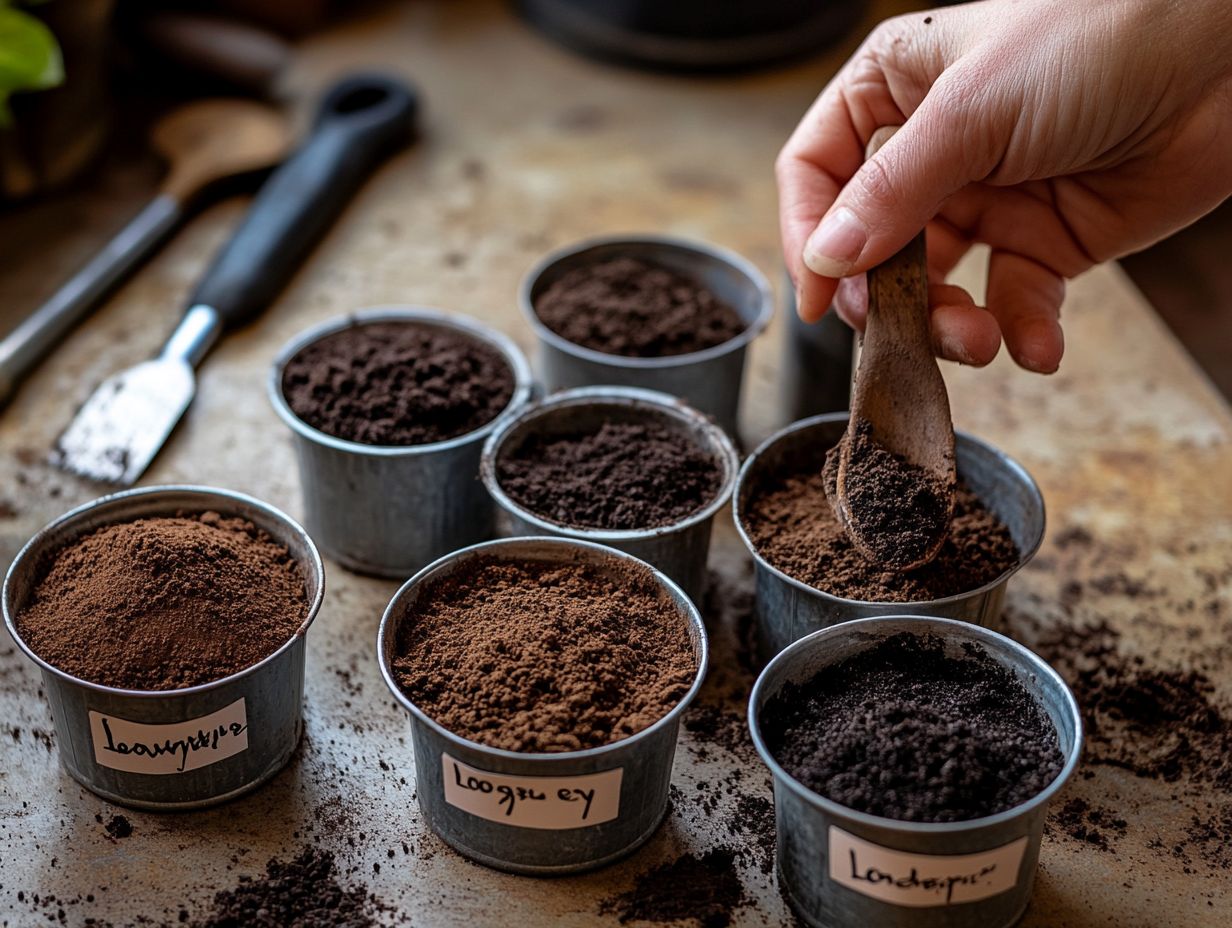
Boosting soil texture is key to thriving crops! Enhancing soil texture is vital for improving soil fertility and structure. This creates optimal conditions for better water retention and nutrient availability, essential for sustainable farming practices.
Unlocking the Secrets to Better Soil Structure
Enhancing soil structure often involves incorporating organic matter. Applying soil amendments can improve nutrient availability and significantly elevate soil health.
Integrating compost, aged manure, or cover crops into your growing environment dramatically boosts the soil’s ability to retain moisture and nutrients. These organic materials enhance microbial activity and foster a robust network of soil aggregates, essential for healthy root development.
Soil amendments like gypsum and lime adjust pH levels and improve nutrient availability, facilitating a balanced ecosystem. Using these methods can boost your crop yields significantly while nurturing overall soil vitality. Act now to enhance your soil and reap the benefits of healthier crops!
Assessing Soil Texture
Assessing soil texture is essential for understanding its unique characteristics and supporting effective soil management. This can be accomplished through a range of simple tools and methods designed for precise soil testing.
Tools and Techniques for Determining Soil Texture
Tools and techniques for determining soil texture range from straightforward field tests to sophisticated laboratory analyses. Each method sheds light on the soil’s composition and characteristics.
Understanding soil texture is vital for agricultural success. It directly influences water retention, drainage, and nutrient availability. For instance, the easy jar test allows you to evaluate soil particle sizes by mixing soil with water and observing the distinct layers settle over time. Meanwhile, precision soil analysis in laboratories offers in-depth insights into mineral composition and organic matter levels.
By utilizing these tools, you can tailor your fertilizers and irrigation strategies, ensuring optimal conditions for crop growth. Accurate measurements can enhance your yields and highlight the importance of effective soil management while promoting sustainable agricultural practices.
Frequently Asked Questions
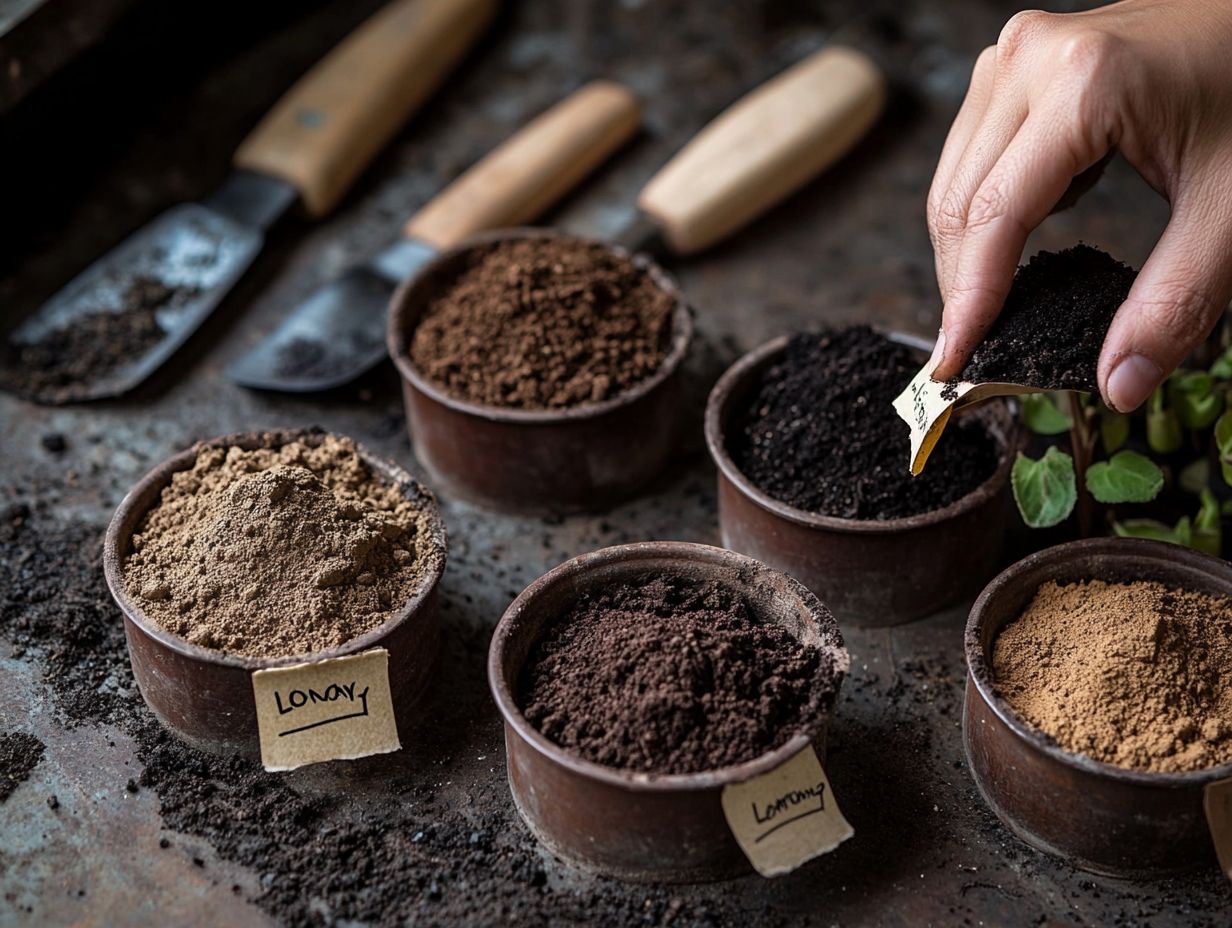
What is soil texture and why is it important?
Soil texture refers to the size of the mineral particles in soil. It affects many soil properties such as water and nutrient retention, aeration, and drainage.
How does soil texture affect plant growth?
Soil texture plays a crucial role in plant growth by determining the availability of water, nutrients, and oxygen in the soil, all essential for healthy plant development.
What are the three main types of soil texture?
The three main types of soil texture are sand, silt, and clay. Sand is the largest particle, followed by silt, and clay is the smallest.
How can I determine the texture of my soil?
You can easily find out your soil’s texture with a jar and some water. Just watch how the particles settle to see the amounts of sand, silt, and clay!
Why is it important to know the texture of your soil?
Understanding your soil’s texture helps you choose the right plants, fertilizers, and irrigation methods. This knowledge can improve soil health and prevent issues in your garden!
Can soil texture be changed?
Soil texture itself can t be changed, but you can enhance it! Adding natural materials like leaves and compost can boost its fertility and health.



